By
cheapcheap
|
|
Packing dishes isn’t overly complicated, but can make you nervous during transportation. In this how-to, we will help take that nervousness away. All you need are the right packing supplies, the proper technique, and most importantly the right, the right moving boxes.
Plates, bowls, glasses and all other dishware needs more than just a “Fragile” or “Handle with Care” sticker or sign on the box.
In our kitchen boxes, which more cardboard is used to produce them and have thicker walls, they can be a little more expensive then your normal moving box. Make sure you don’t use these types of boxes for non-breakables. Durable items like pots and pans can go into regular medium or large moving boxes.
Necessary Packing Supplies for Breakable Items
Packing Tape
It’s worth investing in better quality tape and dispenser for packing your breakable items. Cheaper tape dispensers can get stuck or lose the tape’s edge, which can make packing for your move more time consuming.
Bubble Wrap
This is one of the best packing materials you can use when packing your dishes and glassware. This will add that extra security and padding to ensure protection during your move.
Packing Paper
Also known as blank newsprint paper, this is great for putting in between plates and bowls, and also great to fill any voids in your boxes for extra protection. Using regular everyday newspaper, you run the risk of ink transferring and can be an overall messy experience.
Kitchen Boxes
This style of moving box is perfect for your dishes and Glassware. Made from a thicker cardboard, makes it sturdier than your normal box for moving. You can use it for other fragile items as well. More durable items, such as pots, pans and metal baking pans can be packed in small or medium moving boxes.
Tips for Packing Dishes and Other Glassware
1. Label the Box Fragile
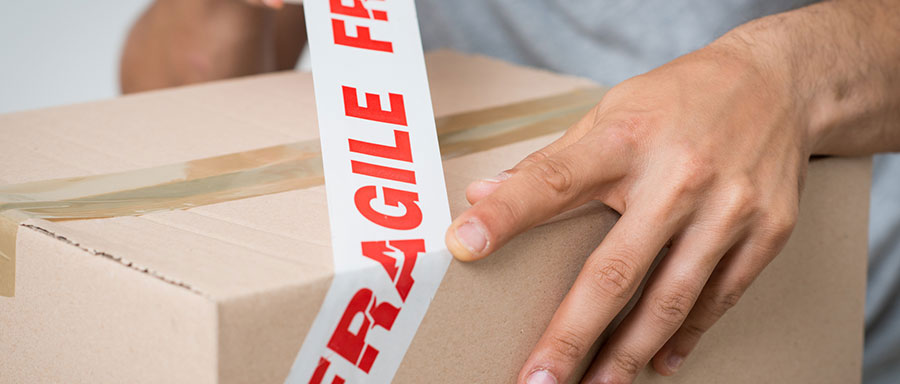
This may be an obvious tip, but if your dishes doesn’t have distinct markings on the outside, you or the movers might accidentally mishandle the box. Use a sticker or write “Fragile” with a marker and a brief description of the contents. Also for good measure is to mark which side is up. If you have packed your box correctly, it won’t matter much which side is up or down. The most important part is to make sure everyone knows that the box contains fragile items.
2. Layer the bottom of the box with packing paper
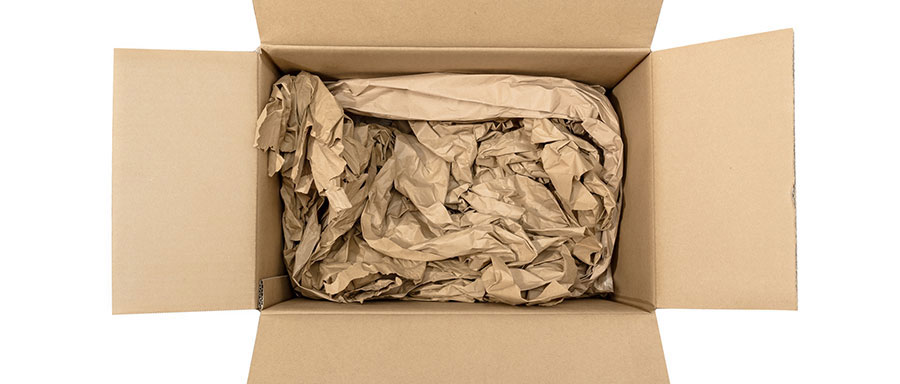
Make sure the bottom of the box is securely sealed and at minimum of a two inch layer of crumbled packing paper is placed. You will also want to make sure that the top of the box is packed with the same amount of packing paper as the bottom. This is to insure that your items are secure during transportation. The more items in the box, the more abundant and denser this layer should be.
3. Wrap dishes, cups and glasses individually
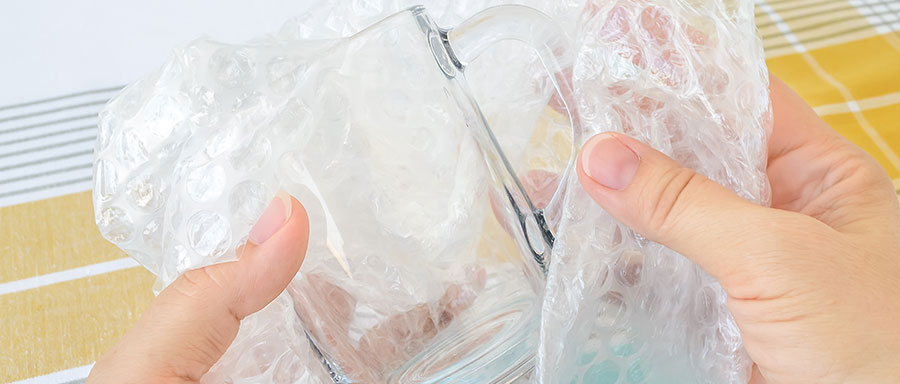
It may be tempting to do, but do not put more than one dish or glass in a single bubble wrap or packing paper. When wrapping glasses we do recommend using bubble wrap. Use crumbled packing paper to fill the empty space in cups, mugs and glasses, then wrap with bubble wrap. For dishes, lay the plate or bowl in the center of a sheet, then fold all the sides towards the center of the item. Bowls you may want to fill the inside with crumbled up paper to add extra protection. The key to packing is never have much open space inside the box where items can move or bump into each other.
4. Place plates on their side vertically and create horizontal rows
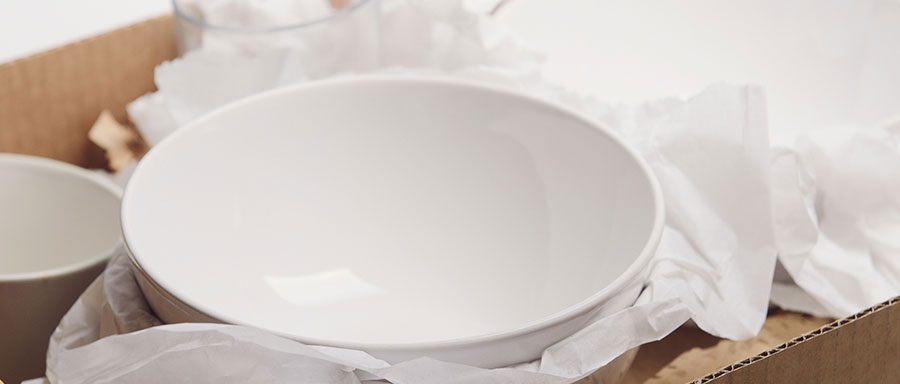
Don’t Stack plates and bowls! This might seem like the easiest way, but this is the most common way for them to break. If the box drops or shifts in the wrong way, the weight of the stacked plates or bowls can cause them to crack or break. Instead, place plates and bowls one at a time vertically and create one long row. Make sure to stuff paper in between each dish.
5. Set Vases, lamps and glasses vertically in box
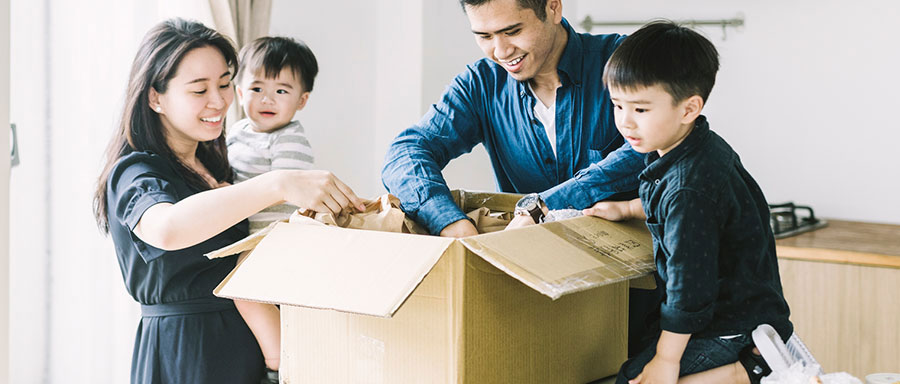
Glasses and cups can break if place horizontally in a box. Place them vertically, so that if dropped the impact is distributed through out the glass. Make sure that when packed, the bottom of the glass is at the bottom of the box. Lamps can be packed in kitchen boxes or in lamp boxes. Lamp boxes are built similarly to kitchen style boxes.
6. Put the heaviest items towards the bottom of the box
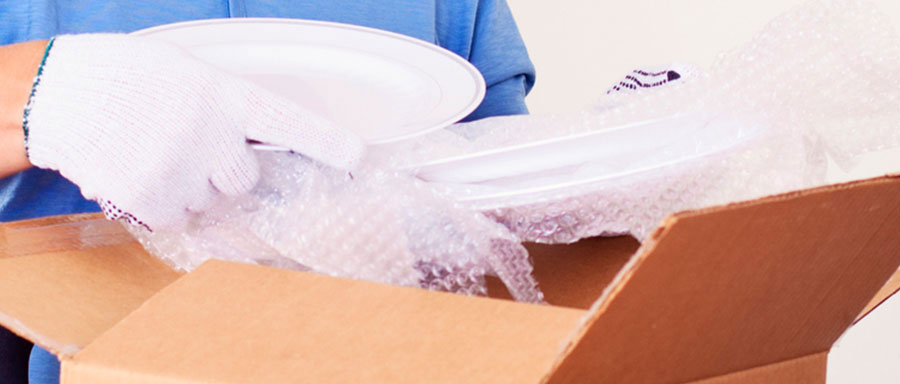
If you have a deep box and will be creating layers of dishware, make sure their is at least an inch or two between each layer with packing paper. Also make sure the heaviest items are place at the bottom.
7. Fill all open space (voids) in the box with packing paper or bubble wrap
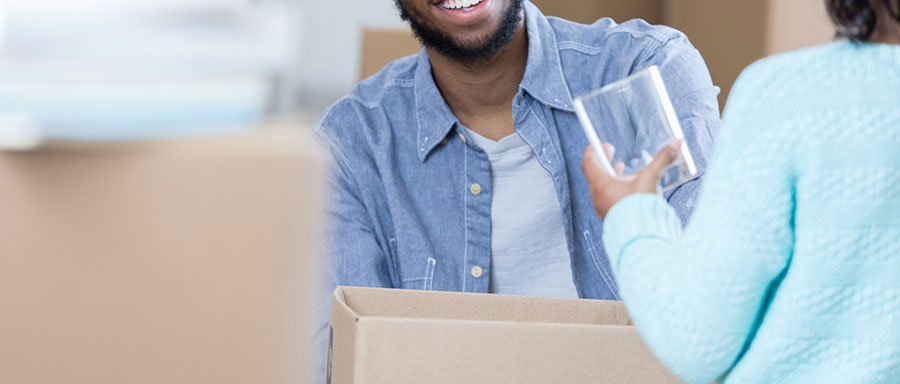
Once the box is completely packed, fill all open space with paper or bubble wrap. This will help from the items shifting during your move. Make sure not to over pack. The heavier the box, the better of a chance something may break inside.